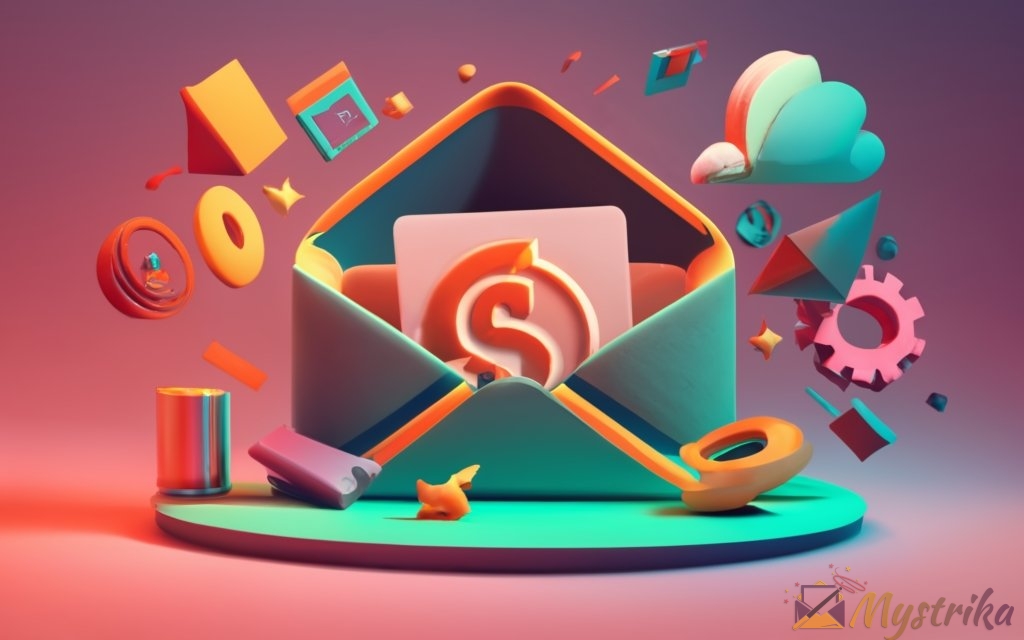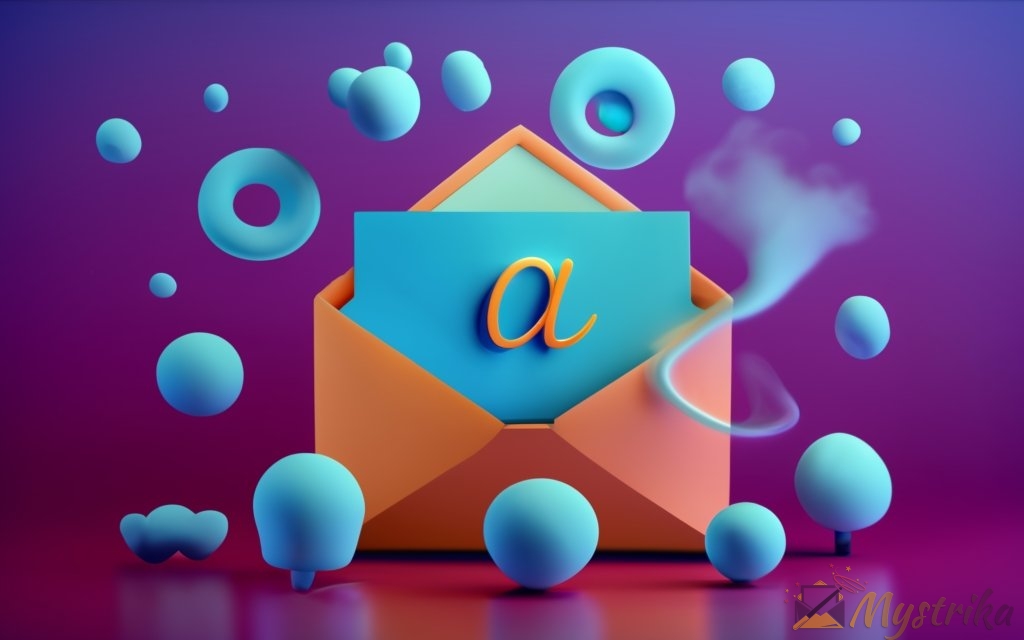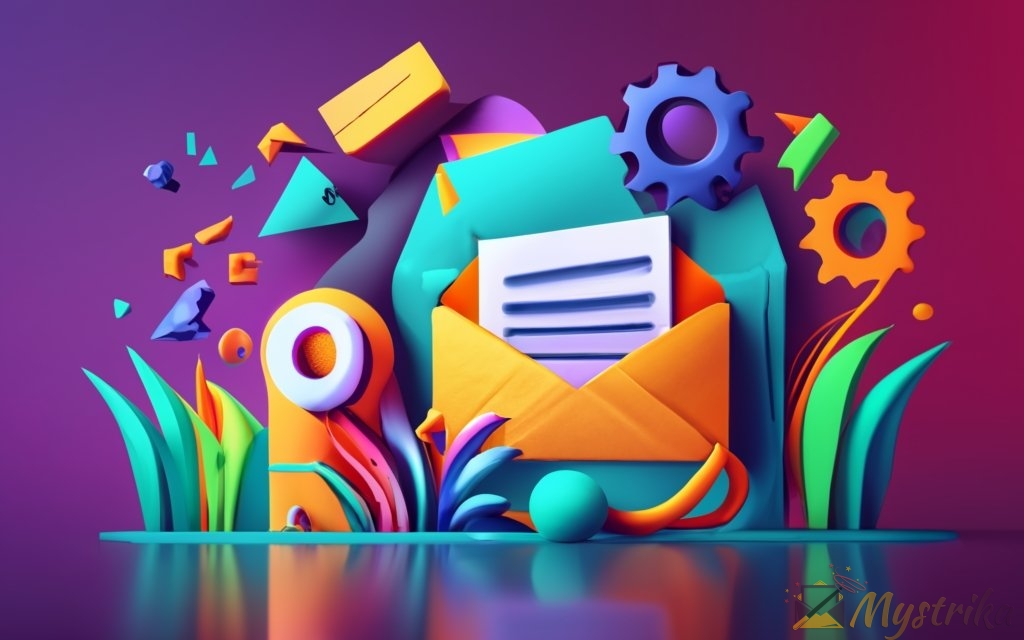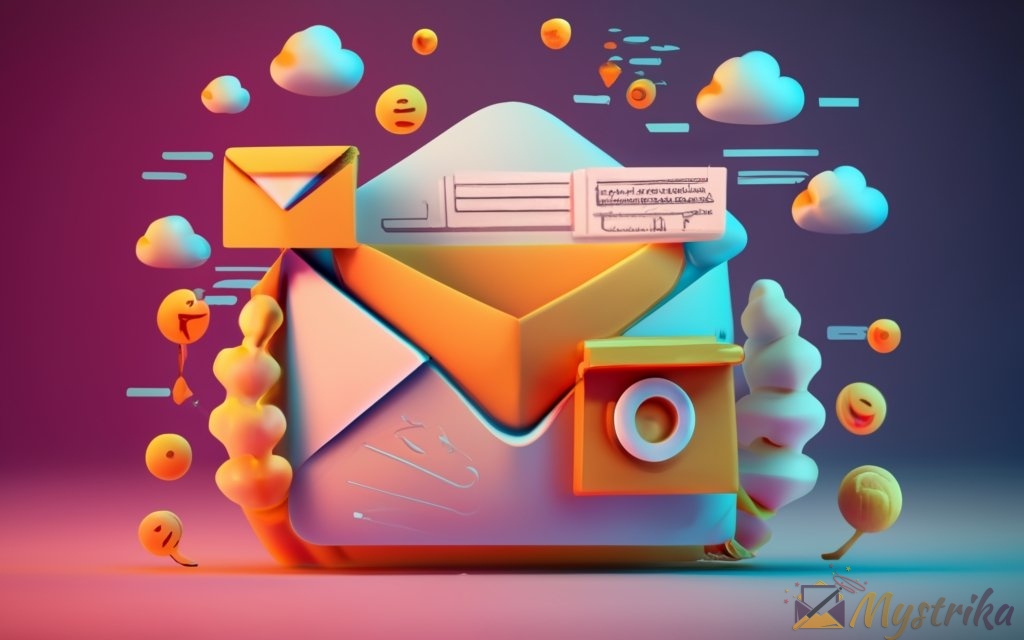You’ve seen them before – messages in your inbox from odd addresses like [email protected] or [email protected]. Why do so many emails seem to come from accounts that don’t allow replies? These peculiar “no reply” addresses have a fascinating history and serve important functions that may surprise you.
This comprehensive guide will investigate the origins, uses, regulations, and future of no reply emails. Understanding these unidirectional communications can help you better manage your inbox while appreciating the logistical roles they fill. Join us in unraveling the curious case of “no reply”!
What is a “No Reply” Email Address?
You likely see them in your inbox every day – messages from companies, services, or mailing lists with a “no-reply” sender address. But what exactly are these peculiar email addresses, and why does no one reply to them?
A Definition of “No Reply” Email
A “no reply” email address does exactly what it sounds like – it sends messages out without any option for the recipient to directly respond. These special addresses are configured to only transmit outgoing emails, and any replies will be ignored rather than bounced back.
Some common examples you may recognize:
Companies set up dedicated no reply email addresses to send one-way notifications, statements, reminders, receipts, or any situation where two-way communication is not needed.
Unlike typical email addresses tied to a real inbox, any responses sent to a no reply address will disappear into the void. Some services auto-delete replies while others simply leave them unread in the account. Either way, don’t expect any response!
When and Why Are No Reply Emails Used?
No reply addresses provide an efficient way for businesses to distribute mass communications without handling individual responses. Here are some of the most common uses:
- Transactional receipts and confirmations – Order receipts, password reset confirmations, payment invoices, shipping notices, etc.
- Mailing list and newsletter updates – Distributing content to subscribers without managing follow-up.
- Service notifications – App sign-up confirmations, alert messages, account notices.
- Marketing blasts – Mass sending promotional content. Although this is discouraged!
- One-way system communications – Automated messages from a service with no individual support.
The key benefit of no reply is simple logistics – companies don’t need to sort through and respond to thousands of return emails. This allows communicating important information to customers without costly overhead.
According to statistics from Litmus, ecommerce retailers saw an average open rate of just 15% for promotional emails in 2019. For a retailer with a million subscribers, that’s 150,000 opens generating potential replies!
No reply addresses help avoid this email deluge.
How No Reply Email Differs from Standard Addresses
So how does a no reply email address actually work under the hood? Here are the key differences compared to normal addresses:
- No inbox – There is no account inbox or way to login and view messages received. Any replies sent disappear.
- Automated sending – Outgoing emails are distributed automatically without someone manually sending each one.
- No response – Replies are not monitored or responded to. Some systems auto-delete replies after a period of time.
- Used for mass sending – No reply addresses are designed for high-volume outbound communications, not individual conversations.
- Limited deliverability – Heavy use for promotional blasts can harm sender reputation, but informational mail is acceptable.
- No spam complaints – Without access to an inbox, bounces or spam complaints cannot be monitored or managed.
- No conversational history – Previous message threads are not tracked since each email stands alone.
Standard email addresses are of course designed for two-way communications with a full inbox. No reply variants make sense when the only goal is distributing a high volume of outbound-only notifications.
In short
- No reply emails are specially configured addresses that send but do not receive messages. Replies disappear into the void!
- Businesses use no reply addresses to efficiently deliver mass communications like receipts, alerts, mailing list updates, and promotions.
- These one-way emails allow distributing important info without the overhead of managing responses.
- No reply addresses differ from normal email by lacking an inbox and conversational history. Any replies are ignored by default.
So next time you see a strange “no-reply” name pop up in your inbox, you’ll know it’s a one-way message – no response needed! Though you may still want to unsubscribe from any unwanted promotional emails.

The History and Origins of “No Reply” Email Addresses
Believe it or not, no reply email addresses have been with us for decades! Understanding the history and evolution of email communication sheds light on why this one-way messaging approach first emerged.
In the Beginning, Email Was Simple
It may be hard to imagine in today’s era of endless notifications, but early email was quite basic. The first standards established in 1982 focused on straightforward message transmission between two parties – you sent an email, and the recipient replied back to the same address.
There were no complex email marketing platforms, automated messages, or mass communication needs at the scale required now. The simple back-and-forth workflow sufficed in most cases. Broadcast emails with no reply didn’t become commonplace until years later.
The Introduction of Email Lists and Notifications
As email grew more popular in the 1990s and usage became widespread, new use cases emerged beyond one-on-one conversations. Businesses wanted to efficiently deliver the same announcements to large groups, rather than manually emailing each recipient individually.
Early mailing list managers like Listserv enabled sending a single email that reached all subscribers at once. However, this created a new challenge – handling potentially thousands of reply emails flooding back!
No reply addresses provided a way to distribute messages without necessitating individual responses. They quickly became a best practice for email lists and mass notifications.
The Double-Edged Sword of No Reply Email
In the early 2000s, no reply email took off exponentially. The modern marketing industry realized the power of reaching customers directly in their inboxes.
Tools like MailChimp and Constant Contact launched, focusing specifically on bulk email campaigns sent from no reply addresses.
Unfortunately, this also led to issues with spam, lack of recipient control, and emails sent from fake or obscure addresses. Numerous anti-spam laws emerged in response trying to regulate these practices.
While indiscriminate email blasting created problems, properly-used no reply addresses maintained clear value for important notices and customer communications. The core concept was not at fault – only abuse of the approach.
Evolution and Refinement Over Time
In response to spam concerns, best practices evolved around how businesses utilize no reply emails:
- Allowing recipients to easily opt out of future messages
- Providing alternative contact methods in each email
- Maintaining consistent brand addressing and sender names
- Limiting promotional content and frequency
Modern email service providers like Amazon SES and SendGrid also help implement safeguards and monitor deliverability issues.
While still allowing high volume outbound-only emails, these changes helped address potential downsides for recipients. No reply evolved into an established email capability with proper guardrails around usage.
A Mature Established Practice
Today, no reply email addresses are a standardized tool for both senders and recipients. When you see a message land in your inbox from “[email protected]”, you know to expect a one-way notification rather than a conversation.
Current email volume makes no reply a necessity for businesses to communicate at scale. And when properly implemented, these one-way emails provide value to recipients through useful alerts and content.
It’s a far cry from the simple point-to-point email of the 1980s!
Key Historical Milestones
- 1982 – Early email protocols focus on two-way conversations between addresses.
- 1990s – Mailing lists allow one-to-many email but generate excessive replies.
- 2000s – No reply addresses are widely adopted but also abused by spammers.
- 2010s – Best practices evolve to balance benefits and potential downsides.
- Today – No reply email enables critical business functions but requires responsible use.
The need to communicate en masse drove the emergence of no reply as a concept. And skillful execution now makes it an indispensable email capability.

How “No Reply” Email Addresses Work
No reply addresses may seem mystifying – how do they send emails outbound without having a functional inbox? Understanding the technical details sheds light on how these specialized email accounts operate.
Behind the Scenes Configuration
Standard email accounts contain both inbound and outbound capabilities. But no reply addresses are configured specifically for only outbound sending. Here are the key technical components:
- Domain and address – A regular sounding email address is created using an existing company domain, like [email protected].
- No inbox access – The address is not tied to a standard account inbox. There is no way to login and view received messages.
- Automated sending – Outgoing emails are distributed programmatically based on triggers rather than being individually drafted and sent.
- Reply handling – Replies may be automatically deleted after a period of time, or left unread in a hidden inbox not visible to the sender.
- High volume capacity – The sending infrastructure supports distributing large volumes of email traffic beyond normal account limits.
- Monitoring and analytics – Delivery rates, bounces, and other key metrics are tracked to optimize future email performance. But not real-time inbox access.
- Reputation management – Send volume and engagement are carefully controlled to maintain good sender reputation, unlike regular accounts which can send freely.
So in summary, these addresses look normal but behind the scenes lack a functioning inbox. The specialized configuration allows optimized, high-volume outgoing email.
Sending Out Messages
When you receive an email from a no reply address, how does it actually get sent to you?
There are two primary methods:
1. Automated triggers – The email is generated and sent automatically based on events like:
- A transaction being completed (order receipt)
- A requested action occurring (password reset)
- A scheduled promotion or newsletter going out
2. Integrated platforms – Emails are drafted in and distributed through specialized services like:
- Email marketing systems
- Customer support software
- Notification and workflow automation tools
In both cases, emails are sent programmatically without someone manually drafting and sending each one individually. This allows large volumes of customized communication to be sent efficiently.
Why Replies Disappear Into the Void
Since a no reply address lacks an actual inbox, your reply goes off into the ether with no one to receive it. But why doesn’t it just bounce back to you?
There are a few reasons replies may be configured to disappear rather than bounce:
- No one is monitoring the inbox, so bounces serve no purpose.
- Bounced replies could be misinterpreted as delivery failures rather than ignored replies.
- The high volume of traffic could overwhelm systems and harm email reputation.
- Some regulatory requirements specify that replies should not bounce for certain types of mail.
So while you may be frustrated that your reply disappears, that prevents additional complications behind the scenes!
In nutshell
- No reply addresses are specially configured for high volume, automated outbound sending.
- They lack a normal inbox, instead auto-deleting or storing replies unseen.
- Emails are generated programmatically and triggered by events and workflows.
- Replies disappear rather than bounce to avoid complications at scale.
Understanding the technical setup makes it clear why no reply emails function differently than typical addresses. The specialized configuration enables communicating at scale while eliminating overhead for recipients and senders alike.

Pros and Cons of Using “No Reply” Email Addresses
No reply emails provide obvious benefits to companies sending bulk notifications and content. But how do they impact customers on the receiving end? Understanding both perspectives shows why this divisive messaging approach persists.
Benefits for Companies Sending Emails
For major corporations, service providers, ecommerce retailers, and other large-scale email senders, no reply addresses offer compelling advantages:
Automation and efficiency – No reply emails are generated and distributed automatically without human involvement. This allows providing millions of customers with real-time alerts and updates that would be impossible to send manually.
Faster delivery – Pre-defined templates and content allow messages to be triggered instantly when events occur, rather than drafted ad-hoc. Customers get time-sensitive notices as soon as possible.
Cost savings – With no staff required to manually draft and respond to emails, overhead costs are slashed. Some estimates put email response costs at over $10 per message, which simply isn’t feasible at scale.
Focus on outbound communications – Companies can optimize around distributing mass communications rather than dealing with inbound responses.
Avoiding response overload – For popular mailing lists or services with millions of users, individual responses could overwhelm customer service teams. No reply emails sidestep this issue.
Data insights – Send rates, open metrics, clicks, and other data is tracked to optimize future communications without incoming messages affecting insights.
For almost any major business, these benefits likely outweigh the drawbacks of no reply email addresses when used properly.
Drawbacks and Limitations for Customers
So what about the experience on the receiving end? No reply emails also have some clear downsides for customers:
No response option – When customers hit reply to ask a question or provide feedback, their email disappears into the void with no resolution. This can be frustrating.
Sense of being ignored – The inability to respond can make customers feel unimportant, like companies don’t care about two-way interaction.
Lack of self-correction – Without incoming messages, companies miss opportunities to identify issues and improve experiences based on customer needs.
Impersonal feeling – The automated nature of no reply emails results in generic communications that seem robotic and distant.
Security concerns – Spoofed or obscure no reply addresses can be used by scammers to send fake notifications and emails.
Tip of the spam iceberg – While legitimate in some cases, no reply addresses are associated with unwanted spam marketing.
Helplessness – Recipients lack recourse options if they encounter issues with services or content sent via no reply.
Customers would certainly prefer responsive options supporting feedback and conversations. But the scale required for modern communications often hinders that ideal experience.
Potential Alternatives to Explore
Could compromises provide a better experience for consumers while maintaining automation benefits? Options like the following help bridge the gap:
- Automated response – A first reply triggers a bot providing common fixes or directing users to other support channels.
- Preferences page – Recipients can customize frequency, content, and other preferences through account settings.
- Unsubscribe link – Clear instant opt-out in every email prevents being stuck on unwanted lists.
- Two-way aliases – Senders use no reply for outbound but monitor a parallel alias address for incoming.
- Feedback forms – Simple contact forms allow structured customer input while limiting open-ended messaging.
Finding the right balance is key – no reply has tangible business value, but thoughtful implementations and alternatives can still provide two-way engagement when it matters most.
The core no reply approach will likely persist, but the implementations will hopefully continue evolving with consumers in mind.

Examples of “No Reply” Email Usage
Seeing no reply addresses in action makes their varied uses and implementations clear. Let’s explore some of the most common real-world examples you’re likely to encounter.
Transactional Receipts and Confirmations
Any time you make a purchase, request a service online, or take an action triggering a system response, chances are you’ll get an instant confirmation email from a no reply address.
These transactional messages provide details about the activity and allow companies to provide real-time updates at scale. Common examples include:
- Order receipts – After purchasing a product online, the retailer immediately sends a receipt from [email protected] with your order details.
- Payment invoices – Your SaaS subscription renews each month with an automated payment receipt from [email protected].
- Password reset emails – When requesting a new password via a company’s website, the system emails you from [email protected] to confirm the reset.
- Form submissions – Filling out a website form triggers an instant confirmation email from the company domain.
- Document delivery – After uploading a document, a no reply email provides access to the file when ready.
- Reservation confirmations – Hotels, airlines, and event venues send booking confirmations and reminders from generic addresses.
- Status updates – App notifications informing you of account changes or new features come from [email protected].
The common thread is taking an action that then triggers a real-time, automated response. The companies don’t intend two-way interactions for these transactional messages – just timely delivery of details via no reply email.
Password Reset Messages
Passwords resets represent a perfect use case for no reply addresses – allowing immediate delivery of time-sensitive security information without handling responses.
The typical flow:
- You request a password reset on a company’s website after forgetting your login.
- Their system generates a unique link with a short-term token for resetting the password.
- An email is instantly triggered from something like [email protected] with the link.
- You use the emailed link to reset your password and regain access immediately.
Enabling an instant, automated process allows users to get back into their account without delays. There’s no need for an interactive conversation or ongoing replies.
And the security-sensitive nature of reset links means preventing abuse by not having open access to the no reply address sending them.
Email List and Newsletter Subscriptions
Email marketing and mailing lists represent one of the earliest and most widely adopted uses of no reply addresses: allowing one-to-many distribution of promotional content.
Typically an automated system distributes the emails based on a pre-set schedule, user preferences, past behaviors, or marketing campaigns. Replies flow into the unknown rather than to a monitored inbox.
Common examples you may subscribe to include:
- Retailer newsletters announcing sales and promotions
- Industry blogs or thought leaders pushing content
- Companies promoting webinars, whitepapers, and offers
- Course creators marketing online training products
- Video creators driving viewership with “what’s new” updates
- Creators promoting new merchandise or pre-orders
The unsubscribe link at the bottom gives recipients some control, but otherwise these emails are focused purely on outbound content delivery.
Website and App Notifications
Services and platforms you use often leverage no reply emails to proactively inform you of account activity, new features, or issues needing attention:
- Account notices – Messages about payment failures, security changes, policy updates, or other account actions.
- New feature announcements – Apps email registered users to highlight recently added or improved functionality.
- Security alerts – Warning of suspicious logins or potential account risks, prompting you to take action.
- Billing reminders – A payment failed or is coming up for auto-renewal.
- Waitlist updates – You’re signed up for a product waitlist, and limited inventory is now available.
- Beta invitations – Services invite select users to preview new offerings before public launch.
- Abandoned experience – After partially filling out a form but not completing it, a reminder email nudges you to finish.
Proactively informing users of relevant account activity is beneficial whether they can directly reply or not. For apps and sites, outbound-only notification serves the primary goal.
Marketing Blasts
And yes…the bane of every inbox – promotional marketing emails! These are often prime culprits for no reply address overuse and abuse.
Some typical approaches:
- Newsletters – Frequent one-way promotional emails sent on an ongoing basis, usually requiring opt-in.
- Announcements – New product launches, sales, or other announcements from brands you’ve purchased from before.
- Content offers – Whitepaper downloads, webinar invites, special deals if you engage further.
- Surveys – Feedback requests and polls to collect data for marketing purposes.
- Retargeting – Remarketing prior customers who didn’t purchase again after a period of time.
- List acquisition – Buying lists of contacts to market broadly based just on demographics.
While allowed in some cases, blind marketing blasts tend to harm sender reputation and customer trust over time. More personalized, thoughtful outreach wins out.
In short
- No reply use cases span important confirmations, security notices, preference management, and an array of customer communications.
- Time-sensitive alerts benefit from instant automated delivery at high volumes.
- Marketing emails without clear value exchange annoy more than assist most customers.
- When used responsibly, these one-way communications provide utility despite lack of response.
Understanding real-world examples makes the appropriate applications of no reply email clear – along with where overuse causes frustration. Targeted, occasional use typically brings the most value.

Best Practices for Companies Using “No Reply” Emails
No reply emails remain a useful communication tool when executed responsibly. What should responsible companies do to walk the line between benefit and annoyance? Follow these best practices.
Provide Alternative Contact Methods
Lacking two-way email interaction, companies should present other convenient ways customers can get support, voice concerns, or manage accounts.
Possible options include:
- Customer service number – A clear phone number in the signature gives recipients a responsive contact method.
- Support email – A separate, monitored email address allows inquiries without adding inbox overhead.
- Website chat – Instant messaging windows create a direct communication channel.
- Social media – Listing Twitter or other social handles facilitates public feedback.
- Feedback forms – Online contact forms submit structured complaints and questions.
- Forums – Community forums focused on customer needs enable transparent issue tracking.
Giving customers clear ways to communicate, even if email isn’t one, demonstrates a commitment to engagement. No reply shouldn’t mean no customer service.
Honor Unsubscribe Requests
Every commercial no reply email must include a hassle-free unsubscribe link – it’s legally required. But some negligent senders either omit the link or ignore opt-out requests.
To build consumer trust and uphold laws like CAN-SPAM, companies should:
- Verify compliance – Double check all emails have a working unsubscribe link.
- Remove immediately – Instantly honor opt-out requests rather than waiting or requiring confirmation.
- Scrub lists completely – Delete opted-out addresses across all internal lists to avoid future contact.
- Watch out for spam traps – Don’t send to opt-out verifier addresses from spam compliance services.
No questions asked, any unsubscribe should permanently end unwanted emails. Anything less results in irritation and potential regulatory issues.
Enable Preference Management
Rather than a blunt unsubscribe, customers may prefer controlling communication preferences and frequency.
Give subscribers access through:
- Email settings – An online preference dashboard to customize subscribed content.
- List categorization – Granular subscription options by communication topic and frequency.
- Profile updates – Accessible personal account settings to manage all preferences.
- Expiration controls – Automatic list pruning after periods of inactivity unless engagement resumes.
- Re-engagement prompts – Win back inactive subscribers by highlighting missed content and new offerings.
Giving recipients more nuanced controls increases the value they get from messages while reducing annoyance.
Follow Anti-Spam Laws and CAN-SPAM
No reply emails must adhere to key regulations and anti-spam guidelines. Specifically:
- Accurate sender info – From address matches company owning list, domain verified.
- One-click unsubscribe – Hassle-free, immediate opt-out included in all content.
- Avoid false content – No misleading subject lines, headline techniques meant to deceive.
- Identify commercial mail – Clear notice when sending sales or promotions.
- Don’t buy lists – Get opt-in consent, don’t send to purchased lists.
- List source disclosure – How subscriber contact was obtained if requested.
Staying compliant builds trust, maximizes deliverability, and minimizes liability. Ignoring laws puts customer relationships and sender reputation at risk.
In nutshell
- Always provide alternative responsive contact methods, don’t leave customers stranded.
- Immediately honor unsubscribe requests rather than waiting or asking why.
- Enable customized preferences so recipients control relevancy of communications.
- Follow all anti-spam and CAN-SPAM regulations around transparency and consent.
No reply email doesn’t have to diminish customer satisfaction. Responsible use that maximizes value and gives recipients control is advisable.

The “No Reply” Concept in Other Messaging Apps
Email isn’t the only digital communication channel that adopted some form of one-way messaging. As other platforms evolved, similar approaches emerged allowing senders to distribute messages without managing responses.
Read Receipts on Mobile Messaging
Widely used apps like iMessage, WhatsApp, Facebook Messenger, and Telegram popularized the concept of read receipts in mobile messaging.
With these turned on, you can see when your messages are delivered and read by the recipients. But they provide no such visibility back – you get no indication if your read status is being tracked.
This one-way awareness allows senders to view critical delivery and response time metrics. But just like no reply email, recipients can’t engage back or understand how the senders utilize the information.
One-way visibility improves the experience for companies analyzing conversations but leaves users partially in the dark.
Making Discussions Private and One-Way
Most chat apps also allow controlling the direction of conversations through private and anonymous messaging.
For example:
- Telegram has one-way communication channels where only the admin can distribute messages.
- WhatsApp allows disabling read receipts and limits for recipients to reply back only once.
- Facebook Messenger enables sending messages that disappear after being viewed.
- Snapchat pioneered ephemeral messaging that deletes after a short time.
- Forums allow anonymous posting without attaching identities.
- Customer support bots provide automated, impersonal responses.
These examples give senders more control and visibility than recipients – prioritizing distribution over interaction.
Scaling Mass Communications
As social platforms grow, they inevitably need to communicate broadly to users for announcements, alerts, and notifications.
No reply email addresses served this role for the web, and mobile platforms now have comparable notification mechanisms.
For example:
- Push notifications broadcast timely updates to millions of installed users.
- In-app banners that appear universally across experiences announce new features or issues.
- Email and digests inform users of platform changes, security issues, etc.
- System messages provide one-way confirmation of account activities and changes.
The common challenge is needing to communicate at scale in a standardized way – reducing the opportunity for true back-and-forth conversations in the process.
Key Parallels
As digital communication evolves, core patterns emerge:
- Senders want to distribute messages widely without managing high volumes of responses.
- Recipients lose nuanced two-way messaging yet gain broader reach.
- Achieving speed and scale necessitates compromising interactive feedback.
- Standardization and automation optimize delivery but lose personalization.
- Data and analytics improve experiences overall but reduce transparency.
The dynamics differ across channels but the tensions stay largely the same. No reply email addresses clearly aren’t an isolated case!

The Future of “No Reply” Email Addresses
Email continues evolving rapidly, with new technologies changing how we communicate. What does the future look like for no reply addresses given these shifts?
Potential Impacts of Emerging Technologies
Ongoing innovation provides opportunities to reimagine no reply approaches in more customer-friendly ways:
- AI assistance – Intelligent bots could respond to common questions, requests, and feedback for one-way notifications.
- Enhanced analytics – Deeper insights from reply content could inform better products, services, and experiences.
- Smart composition – GPT-3 and other AI could generate more personalized messages at scale.
- Prediction modeling – Data analysis predicts and triggers the right communications for each customer.
- Anonymous interfaces – Allow two-way conversations without linking identities to companies.
- Advanced targeting – Reach only customers wanting specific communications, not mass blasting.
- Customer feedback integration – Directly integrating polls, requests, and feedback opportunities.
Smarter systems that glean more value from communications while providing more thoughtful user experiences are certainly possible.
Shift Toward Two-Way Communications
With consumers increasingly valuing personalization and engagement, brands recognize that purely one-way messaging risks relationships.
We may see shifts like:
- More selective use – No reply reserved only for truly high-volume notifications rather than all communications.
- Two-way partnerships – Recipients co-create value with brands via conversations instead of passive consumption.
- Tighter targeting – Minimize fatigue by reaching only customers likely to appreciate specific content.
- Omnichannel coordination – Integrate no reply with other channels like chatbots to manage responses.
- Hybrid engagement models – Maintain automation benefits while still incorporating feedback systematically.
- Win-win messaging – Shift focus to delighting customers rather than ease of content distribution.
With thoughtful use, no reply can still play a role in broader two-way relationships via other channels.
Maintaining Core Benefits
However, the core benefits of no reply addresses will persist:
- Efficient notifications – High-volume delivery of real-time notices will stay valuable.
- Security – Account alerts and updates need protecting from exploitation risks.
- Logistical necessity – At massive scale, full conversations simply aren’t feasible.
- Cost effective – Eliminating overhead remains imperative, even if supplemented elsewhere.
- Consumer acceptance – When used judiciously, most understand the necessity of no reply.
- Compliance applications – Regulation requires one-way messages in certain contexts.
Completely eliminating no reply in favor of interactivity would create huge challenges. Blending its strengths with engagement is the ideal path.
In short
- New technologies can make automated messaging smarter, more targeted, and reciprocal in new ways.
- Brands will shift toward integrating no reply into broader nurturing communications when possible.
- But the core logistical needs met will still necessitate no reply functionality in key scenarios.
- Striking the right balance will be critical as technology expands what’s possible.
Rather than disappearing, no reply email is likely here to stay in some capacity. But the implementations will hopefully get smarter and incorporate customer needs more thoughtfully over time.

Frequently Asked Questions About “No Reply” Emails
Confusion and questions often arise when receiving emails from no reply addresses. Let’s explore some common FAQs to dispel uncertainty.
Why Can’t I Reply to These Emails?
The “no reply” name says it all – these addresses are configured to only send outbound emails, without having a standard inbox to receive your responses.
Some key reasons it’s set up this way:
- Managing individual responses to mass emails would have massive overhead. No human can respond to thousands or millions of messages.
- The emails are auto-generated based on events and triggers rather than manually sent each time.
- Security precautions prevent abuse by not allowing access to accounts sending sensitive notices like password resets.
- Regulatory requirements mandate no reply for certain types of system and transactional messages.
- Tracking outbound send performance provides data insights without incoming messages skewing analytics.
So in short, no reply email accounts are designed intentionally without inbox capabilities since managing responses simply isn’t feasible or necessary in these high-volume cases.
Does a Real Person Read These Messages?
Because no reply emails are configured to send automatically without an inbox, there is no one monitoring and reading any given message you receive.
They are generated by automated systems and software, not drafted individually by humans each time. However, people do initially:
- Set up the account, templates, and sending logic to distribute the emails.
- Review delivery performance metrics to optimize the configuration.
- Test sample message flows to ensure proper sending.
- Add new use cases and scenarios that trigger relevant notifications.
So while no human is reviewing your specific email, teams do work behind the scenes to craft the overall experience. People just aren’t involved per individual send.
What If I Need to Contact the Company?
Lacking a reply option can be frustrating if you have an issue needing resolution or feedback to share. In those cases, well-implemented no reply emails should provide alternative ways to contact the company:
- A separate customer service email address or contact form.
- Phone support numbers.
- Links to chat with a live agent.
- Feedback forms or experience rating surveys.
- Social media handles for public feedback.
- Your account preferences page to update email settings directly.
Quality senders understand that no reply has limitations, and provide clear ways to engage when needed outside of email responses. However, you may need to do some digging if these alternatives aren’t presented prominently.
How Do I Opt Out of Future Emails?
By law, all commercial no reply emails must have a working unsubscribe link allowing you to instantly opt out of future communications.
To stop their emails for good:
- Click the unsubscribe link typically in the footer or signature.
- Confirm your intent to opt out on the page you’re directed to.
- If the link errors out or seems broken, contact the company via other means.
- Complaints to regulatory agencies like the FCC may also compel them to honor your opt-out request.
- As a last resort, block or filter the sender if they ignore your unsubscribe.
Once you successfully opt out, the commercial sender is prohibited from contacting you again in most jurisdictions. Persistent emails after unsubscribing constitute illegal spam in many cases.
Other relevant questions :
Why do I get emails from no-reply addresses?
Companies use no-reply email addresses to send outbound notifications, alerts, receipts, mailing list updates, promotions, etc. without needing to handle responses. The high volume makes replies infeasible.
Who is sending these emails?
The emails are sent automatically by systems and software, not real people drafting each message. Companies set up the accounts, templates, and sending logic.
What should I do when I get a “no reply” email?
Don’t bother replying – your email will disappear untouched. Instead, look for an unsubscribe link or alternative contact information to reach the company.
How do no reply addresses work technically?
These accounts lack a normal inbox. Emails are triggered by events like purchases or newsletter sends. Replies may be deleted or left unread in an inaccessible inbox.
Why don’t my replies go through?
No reply accounts are designed intentionally without inbox capabilities. Managing high volumes of responses would have massive overhead.
Can I unsubscribe from no reply emails?
Yes, there must be an unsubscribe link. Click this to opt-out of future messages. If it seems broken, contact the company via other means.
Are no reply emails from real people?
No, each message is generated and sent automatically when triggered by certain events or workflows. But real people do set up the technical configurations.
What if I need to contact the company sending the emails?
Quality no reply emails will provide alternative ways to contact the company like a customer service number or feedback form.
How are no reply emails legal if I can’t opt out?
They are only legal if an working unsubscribe link is included. Persistent emails after opting out constitute spam in many jurisdictions.
Should I be concerned about security with no reply emails?
For sensitive account notices, the no reply setup prevents inbox access abuse. But confirm the sender domain matches the company’s official site.
Why does no reply email persist if recipients don’t like it?
The logistical necessities of communicating at scale ensure no reply addresses meet indispensable needs despite poor interactivity.
Key Takeaways on Using and Understanding “No Reply” Email
After exploring no reply emails in depth, what are the core points to remember for both professional senders and consumer recipients? Here are some key takeaways.
Purpose and Best Practices for Companies
For brands, businesses, and other professional email senders, no reply addresses serve key functions:
- Allow high-volume communications without costly overhead of managing responses.
- Provide instant automated notifications triggered by events like purchases.
- Distribute timely alerts and announcements without delays of drafting unique messages.
- Ensure security for sensitive links by preventing inbox access abuse.
- Analyze performance through delivery metrics without reply content skewing data.
Businesses gain real benefits, but should follow best practices to avoid harming deliverability and customer experiences:
- Include alternative contact methods like chat, feedback forms, help email addresses, etc.
- Make unsubscribing instant and permanent – don’t continue emailing opt-outs.
- Follow anti-spam regulations and CAN-SPAM guidelines.
- Avoid purchasing lists – only email those who specifically consented.
- Provide granular preference management and frequency controls.
No reply remains highly useful when applied judiciously with customer needs in mind.
Tips for Consumers Receiving “No Reply” Messages
When you get a no reply email, keep these tips in mind:
- Don’t bother replying – your message will disappear into the void unread!
- Look for an unsubscribe link if you want to stop unwanted commercial emails.
- Check for alternate contact methods if you need to engage the company directly.
- Mark as spam if you receive persistent emails after unsubscribing or asking to opt out.
- Disable read receipts on mobile if concerned about email tracking.
- Understand that no reply is used for needed logistical purposes beyond marketing.
- Provide feedback via social media or third-party review platforms if unsatisfied.
- Make use of preference management and list categorization options when available.
As a recipient, focus on controlling your experience rather than attempting communication with no reply senders directly.
Core Benefits to Understand
Stepping back, remember that no reply addresses:
- Allow companies to communicate critical information at global scale.
- Provide instant notifications and reminders that would be impractical otherwise.
- Are indispensable for managing communications for services with millions of users.
- Meet legal and regulatory requirements for some types of system emails.
- Represent just one channel – integration with other two-way options is ideal.
- Were developed to solve logistical needs unlikely to disappear completely.
With mindful use, no reply email fills an important role – for both senders and recipients – that other options cannot fully replace. Understanding its purpose makes seemingly impersonal communications less frustrating.
Summary
Let’s review the core points on using and understanding no reply email addresses:
- No reply emails are specially configured for sending outbound notifications without an inbox to receive responses. Replies disappear rather than bouncing back.
- These one-way communications allow efficient high-volume messaging without manageable overhead. However, misuse also risks harming deliverability and customer relationships if best practices aren’t followed.
- No reply addresses first emerged alongside early email protocols and lists. Adoption accelerated as companies sought to communicate at scale. The approach persists today despite frustrations on the consumer side.
- On the technical side, no reply accounts are set up intentionally without standard inbox capabilities. Outbound emails are triggered based on events and workflows rather than sent individually.
- Benefits like cost savings and performance insights drive business adoption, but lack of responses and personalization degrades recipient experiences. Striking the right balance is an ongoing challenge.
- Use cases range from vital confirmations and alerts to annoying marketing blasts. No reply suits time-sensitive, high-volume notifications better than conversational messaging.
- Senders should provide response alternatives, follow anti-spam laws, allow granular unsubscribes, and ensure value exchange to mitigate common downsides.
- Recipients should focus on managing subscriptions and preferences rather than attempting direct replies. Understanding the logistical roles no reply serves helps reduce frustration.
- As communication channels evolve, opportunities emerge to make no reply approaches smarter and more integrated while preserving core benefits.
No reply email persists by solving indispensable communication needs at scale despite often compromising interactivity. With diligent, customer-focused use, it can deliver utility without disengagement. Understanding the nuances allows recipients to better manage inbound communications while prompting conscientious usage by senders.

